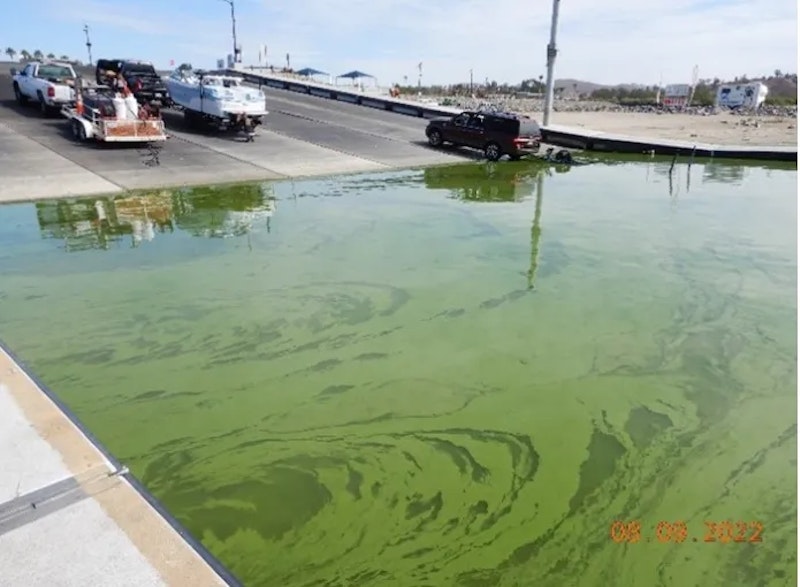Lake Elsinore is a large body of fresh water in California, fed by the San Jacinto river. It’s estimated that the lake contains about 9.8 billion gallons of water when healthy, which for lakes is cyclical.
Between 1862 and 1865, Southern California suffered near-catastrophic drought, but at the end of 1882 and the beginning of 1883 it rained so much, the lake flooded much of the area at its shores. Lately, (relatively speaking) Lake Elsinore has gotten warmer, like a lot of California, and the rest of the planet, as well.
In Elsinore’s case, that warming means algae grows at a significant pace, and this particular form of algae carries with it a noxious aroma. It’s also toxic, and can cause skin rashes, eye damage and gastrointestinal problems. The city closes the lake when the bloom gets bad. In 2022, the lake was closed for six months, and the city lost $300,000 in lake use fees.
It’s important for the city of Lake Elsinore to battle the periodic algae issue, due to the amount of money brought in tourism. One high-value event is the annual Lake Elsinore Dream Extreme Fishing Derby, held in March. The $120 entry fee for teams of two is one source of the more than $15,000 in prizes handed out for those who bring in the biggest bass, catfish, carp, crappie or wipers. The algae situation, at times has been bad enough to impact the derby, so something had to be done.
Conventional efforts over the years have failed to solve it, in part due to the size of the lake. Lake Elsinore spans 3300 acres, or more than five square miles. It’s the same size as London’s Heathrow airport. Scooping algae with a net isn’t going to get the job done.
Moleaer is an engineering firm based in Hawthorne, California. Their website says they “develop industrial scale nanobubble technology.” Their products are used to help grow food, improve drinking water quality and “reduce effects of contaminated runoff into freshwater bodies.” About eight years ago, company founder Bruce Scholten found a way to produce nanobubbles on an industrial scale. Nano bubbles are used to aerate water systems. Algae blooms occur, in part, because surface water becomes warm and stagnant.
The City of Lake Elsinore contracted to work with Moleaer in 2023. Moleaer has installed two industrial-strength nanobubble circulation units. The City Council has committed $2 million to the lake restoration effort.
The commonly-used explanation for the size of a nanobubble is that it’s 2500 times smaller than a grain of sand. The circulation units built by Moleaer can pump anywhere from 500 to 5000 gallons per minute. The city has installed two barge-mounted units and they’re expected to treat about 2400 gallons of lake water per minute of operation.
The algae’s on the lake’s surface, and nanobubbles are simply too small to float. All those nanobubbles are ending up near the bottom of Lake Elsinore. This is good. The bubbles transfer oxygen into the water. This process agitates sediment and disperses contaminants. That oxygen at depth decreases the amount of phosphorous released from the bottom of the lake. Ultimately, the algae bloom suffocates and dies.
Moleaer has distributed more than 2400 of their units across 52 countries and are used in water treatment, agricultural applications, and most recently, in car washes. They say their technology will boost cleaning efficiency and conserve water. Slide your EV through a billion nanobubbles.

